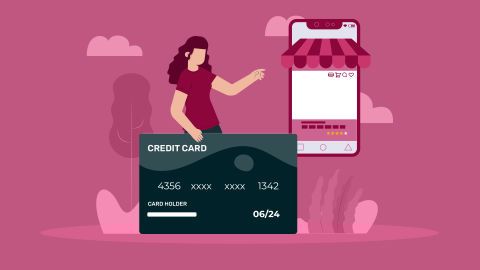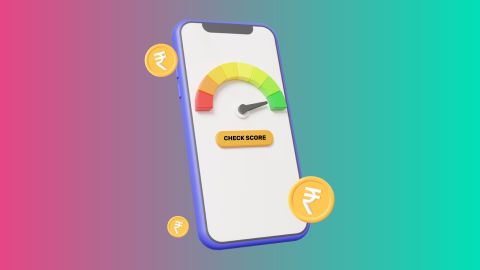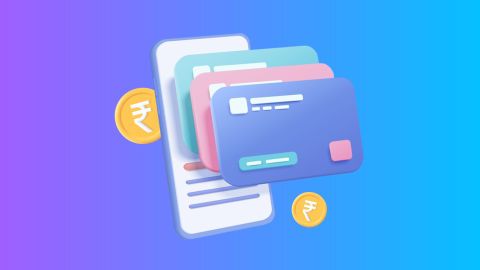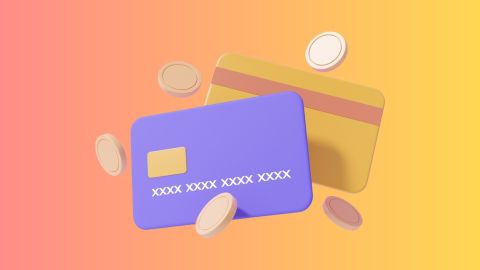A card verification value or a CVV number is a 3-digit code printed on the back side of a credit or debit card. Also known as card security code or card verification code, it acts as an additional security layer protecting your data during online transactions or card swipes at POS machines.
The CVV code, which is distinct from the card’s PIN, is required while making online transactions. Cardholders must protect their CVV and not share it with anyone to avoid falling prey to cyber fraud.
What is the CVV number on a credit card?
CVV stands for Card Verification Value and refers to the magnetic strip behind your card. While the magnetic strip contains your data, a unique 3 or 4-digit code is assigned to the back of your card. This CVV number is a decimal representation of a code specifically assigned to your data and known only to your card issuer. Thus, every time you swipe your credit card, the data on the magnetic strip is used to verify your identity, and your CVV confirms the same, making your transaction secure.
Your credit card CVV number is also called a Card Security Code (CSC) or a Card Verification Code (CVC). This CVV code is a three-digit number on credit cards offered by VISA, MasterCard, and Discover. American Express cards have a four-digit CVV number.
Where to find CVV Number on the Card?
As the three-digit CVV code is printed on the credit card itself, accessing it is not difficult. If you are a Visa and MasterCard credit cardholder, you can find the CVV number on the back of your card. The code is printed on the right side of the signature panel after your credit card account number. The American Express credit card, on the other hand, has the four-digit CVV number printed on the front of the card above the account number.
Additional Read: Balance transfer credit card
How the CVV number helps you protect against fraud
Your CVV works in multiple ways to protect you from fraudulent transactions.
- When you type in your CVV number during an online transaction, you prove that you have physical possession of the card.
- Further, this CVV number cannot be guessed or forged by just knowing your credit card number.
- It also cannot be copied while your card is swiped.
- If there is a change in the data stored in your card’s magnetic strip the transaction is declined due to a ‘damaged card’ error.
- Merchants cannot save your CVV number according to Payment Card Industry Data Security Standards
So, even if you save your credit card number and other details on a seller’s website, you are still required to key in the CVV code to complete every new transaction. This is why you will notice the CVV field is empty even on frequently used apps where you choose to save your card information.
Though CVV on the card is an excellent safety feature, your credit card is not entirely safe from scams like phishing or other cybercrimes. This is because not all merchants require the credit card CVV code to complete a transaction. So, a fraudster or hacker can easily use your credit card details to carry out unauthorised transactions on sites that do not require the CVV.
To avoid situations like these, look for multiple layers of security features that safeguard your finances while applying for a credit card. For instance, the Bajaj Finserv RBL Bank SuperCard comes with robust protection features. The RBL MyCard App allows you to deactivate and block/ unblock your SuperCard in an instant, in case you lose your card. Further, the zero-fraud liability cover compensates you for fraudulent transactions made using your SuperCard. All this with no compromise on benefits! As one of India’s best international credit cards, the RBL Bank SuperCard helps you can save up to Rs. 55,000 annually, enjoy interest-free cash withdrawals up to 50 days and avail of a personal loan too! With customised offerings, you can enjoy expedited and tailored financing when you check your pre-approved credit card offer.
DISCLAIMER:
While care is taken to update the information, products, and services included in or available on our website and related platforms/websites, there may be inadvertent inaccuracies or typographical errors or delays in updating the information. The material contained in this site, and on associated web pages, is for reference and general information purpose and the details mentioned in the respective product/service document shall prevail in case of any inconsistency. Subscribers and users should seek professional advice before acting on the basis of the information contained herein. Please take an informed decision with respect to any product or service after going through the relevant product/service document and applicable terms and conditions. In case any inconsistencies observed, please click on reach us.
*Terms and conditions apply








